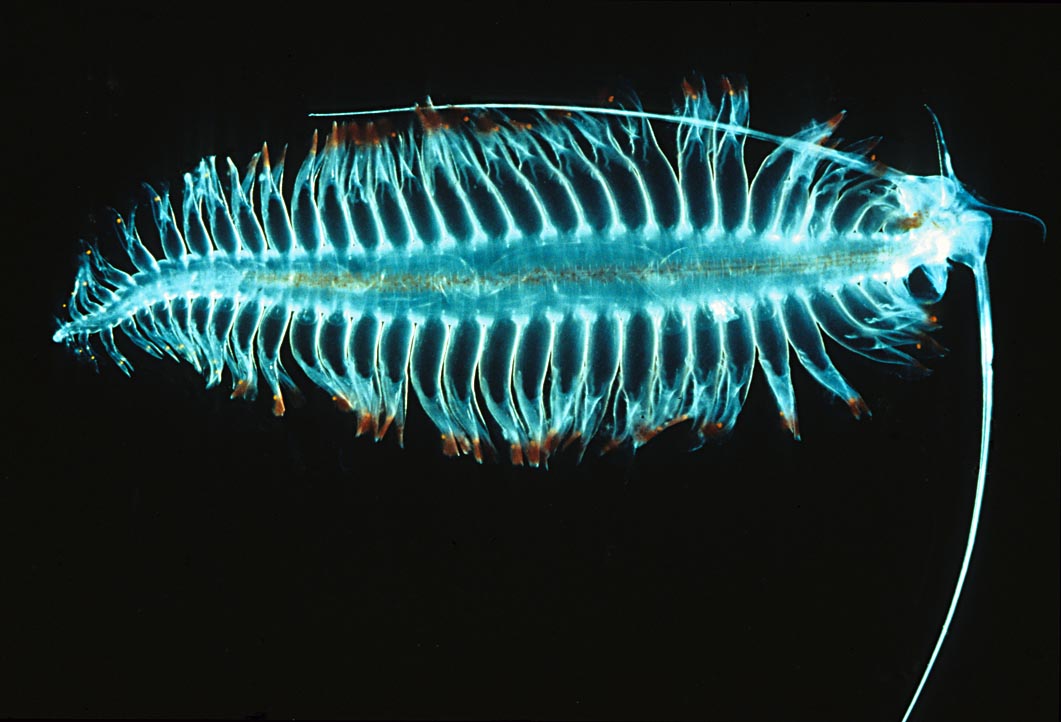Week 6: Annelids
Physiology of Annelids
Teuthidodrilus or “Squidworm”
By: Lila Boudrie Revised 11/29/17
The image above is showing a Marine Annelid that belongs to the Class Polychaeta. This group is paraphyletic and commonly known as bristle worms.
What is Physiology?
Physiology is the study of the functions of organisms and how their body parts work. The greek word translates to “natural origin” so this makes sense because we are talking about the natural processes that organisms go through on a daily basis necessary for survival.
How did I discover the unknown organism?
The image above is the Teuthidodrilus marine worm that is in the Polychaeta class of the Phylum Annelida. I discovered that this was the unknown organism that was presented to my class by doing some searching online and in my textbook. We had narrowed down that it was some sort of marine animal, but whether or not it was a worm was the challenging part. I had first looked into the Phylum Mollusca believing that it could have been some species of slug. After have some second thoughts, my partner and I took a different approach when trying to determine what exactly this was. To do this, we decided to focus on all of its segmented appendages. This observation then lead us to believe that it was much more Annelid like.
Body Functions of the Squidworm
There are three main body segments of these worms, the first being the prostomium; which is considered to be the mouth. The peristome is surrounded by the mouth and this area contains all of the various segments off of the head area. There can be different numbers of tentacle looking appandages depending on each species of polychaete worm. Lastly, the parapodia is what contains the
“fleshy outgrowths on each segment following the peristome, contain bundles of setae (movable bristles), which differ in structure and function among species and thus provide a key to species identification”, (Britannica, 2017).
These worms can have up to 6 pairs of translucent paddles located on either sides of their bodies. These paddle shaped “legs” are used mainly for swimming and movement. They also have about ten interestingly long tentacles located near the head that can be the same length of the body and sometimes even longer. They do not have any kind of eye sight whatsoever so it is believed that they use their tentacles near their heads for a sense of smell. There are structures on the ends of the appendages that are specialized for touch, smell, or taste. There are two tentacles that are specifically used for feeding, the others are used for breathing and feeling its way around.
The image above is showing another species of Polychaete worm. As you can see this worm does not have all of the same physical features that the Squidworm has. It is missing the tentacle like appendages coming off of its head. Keep reading to find out why this might be.
How do these animals make these functions possible?
One organ that makes this possible is the Nuchal organ. This organ allows the animal to taste and smell underwater. The organ itself is a ciliated pit that is located at the posterior end, in the first segment of the polychaete worm. Because they do not have eyes it is thought that this organ could also help with light/dark detection, finding food, and possibly a mate. There are two of these structures that are located on each side of the head that look like feathers, however it is still considered to be a single organ. This is something that CAN differentiate these worms from the others in the phylum, meaning that not all worms have them. The paddles on the sides of the organism are used for movement and swimming. These paddles are able to function properly by tightening and contracting the muscles within the body. Each segment of the body contains all of the functions necessary for survival.
Systems
Polychaete worms do have some of the vital organ systems that humans have. This includes a nervous system, digestive system, excretory system, respiratory system, and circulatory system. The nervous system contains either a dorsal brain or a supra esophageal ganglion, which takes up a very tiny amount of room in the prostomium segment of the worm. The muscles that these annelids have are controlled by the ventral nerve cord. This cord has two stands of ganglions and extends the entire length of the body. The nerves located in each segment of the worm tell them whether or not to move impulses away from the ganglion (motor nerves) or to move closer to it from a sensory receptor (sensory nerves).
watch – video of the Squidworm
Similarities of the Phylum
The Teuthidodrilus “squid worm” is closely related to a more recent discovery genus of annelid worm called Swima. There are serval species and they also contain nuchal organs. Like I mentioned earlier in the body functions section, squid worms can vary from others based on their body plans and how they work. Each species usually has slight differences that make identification of each species a little bit easier for us. One way that they have been divided into groups is by whether they are free-moving, sedentary, or pelagic (ocean dwelling). This gives us a better idea of the similarities and differences they may share structurally or functionally.
Work Cited
1. http://animaldiversity.org/accounts/Polychaeta/classification/#Polychaeta
2.http://study.com/academy/lesson/what-is-physiology-definition-history.html
3.https://phys.org/news/2010-11-bizarre-squidworm.html
4. https://www.ncbi.nlm.nih.gov/pmc/articles/PMC3097850/
5.https://en.wikipedia.org/wiki/Nuchal_organ
7.https://watermark.silverchair.com/j.1096-3642.2011.00727.x.pdf?
8.https://www.britannica.com/animal/annelid/Form-and-function


